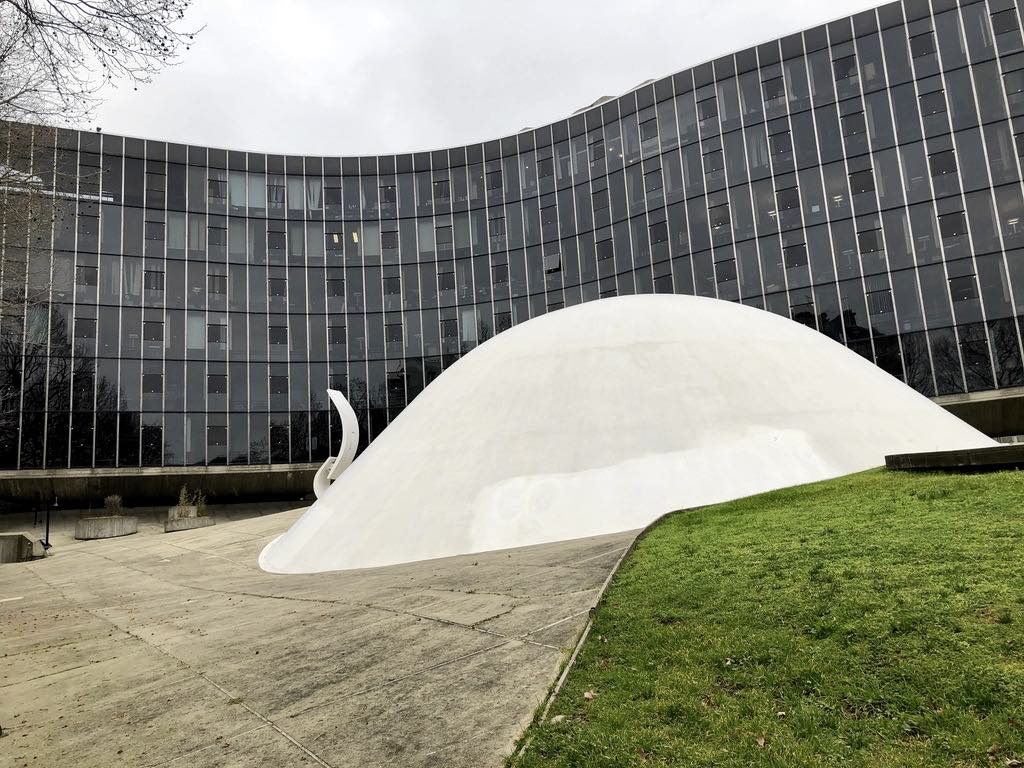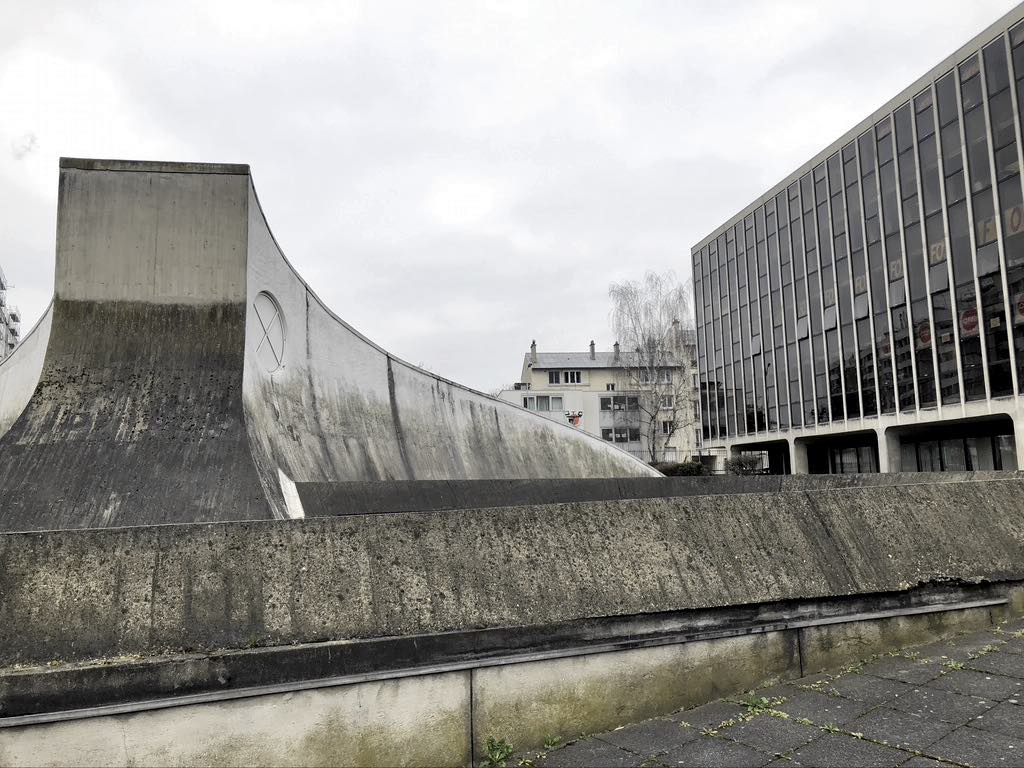
A half-century after Brazilian architect Oscar Niemeyer (1907-2012) designed the headquarters of the French Communist Party in Paris, it is still a shock to spot what looks like a flying saucer, as white as the back of a swan, gradually come into view as you walk up Rue des Grange aux Belles in the 10th arrondissement. As you approach, you see that the white mound is half-buried in the sloping plaza in front of an elegantly undulating glass building. The white UFO, it turns out, is the roof of the building’s underground auditorium.

Niemeyer is universally known as the primary architect of the revolutionary capital Brasilia, but when the architect, a member of the Brazilian Communist Party since 1945, went into exile in 1965 after the military coup at home, he was welcomed in France, which became his base for projects in other countries and where he designed numerous buildings before returning to Brazil in 1985. His projects in France, less well-known than many others, are the subject of a new book, Oscar Niemeyer en France. Un Exil Créatif (Oscar Niemeyer in France: Creative Exile), by Vanessa Grossman and Benoît Pouvreau.
If Niemeyer adopted many of the principles of one of his heroes, Le Corbusier – the use of concrete and industrial materials, open interior spaces, buildings lifted into the air by pilotis (piers), rooftop terraces and planes of contrasting bright colors – he resisted others. Le Corbusier was all about straight lines, while Niemeyer loved round forms and sensual curves; the former eschewed decorative touches, while the latter took the trouble to texture the surface of interior concrete walls in the CP headquarters and was not against using ceramic tiles with brightly colored patterns here and there.
In the Paris area, the main Niemeyer buildings are the aforementioned Communist Party headquarters, on Paris’s Place du Colonel Fabien; the Bourse du Travail in Bobigny; and the Communist Party newspaper L’Humanité’s building in Saint-Denis. Of the three, the first is the most impressive and best-preserved, a showplace for the architect’s work.
When visiting the building, the first challenge is to find the entrance, just a nondescript stairway disappearing into the ground, so discreet as to be almost invisible, a choice that avoids any interruption in the smooth facade of the building. Inside, the underground lobby is an expansive, hushed space with curving walls and beautifully lit (Niemeyer, like Corbu, paid special attention to lighting) islands for conversation, furnished with comfortable easy chairs and ottomans designed by the architect and his daughter, Anna Maria, with their distinctive stainless-steel structure.
The interior of the domed auditorium under the white mound is something of a wonderland with light diffused through thousands of suspended aluminum strips, which also help control the acoustics. The rooftop terrace is another marvel, with its 360-degree views of Paris and terraced seating, which Niemeyer designed around the building’s machinery.

In Bobigny, the Niemeyer-designed Bourse du Travail has not fared as well, but it still has its spectacular curving wall, underneath which is another stunning auditorium. The bright yellow paint that once covered one side of the exterior wall (see photo at top of this page) has been removed – “Unions don’t like yellow,” the architect Jean-Maur Lyonnet, who was Niemeyer’s partner in France, told me – and the concrete has deteriorated, as it is wont to do with time.

Inside, the lobby and auditorium have been subjected to indignities inflicted by everyday use and safety regulations, but the trumpet-horn-shaped auditorium still has a wall painted the same shade of acid yellow that was removed from the outside of the building and has other wonderful attributes such as vertical strip lighting that follows the curves of the ceiling.

In Saint-Denis, near the famed basilica, Niemeyer’s L’Humanité building, dating from 1978, is in an even sadder state after sitting empty for 14 years. It was acquired by the state in 2009 and will supposedly be repurposed and restored, but what it will be and when it will be done are open questions.
Meanwhile, Niemeyer fans must content themselves with walking around the building – which had to be crammed into a tight triangular plot and is surrounded by works by other modern architects, many of which suffer from the comparison – and admire the curves of the building, the frieze of porthole shapes along the top and the green glass that was chosen in relation to the color of the basilica’s roof. Niemeyer, who had gone back to Brazil by then and was growing old, never saw the building but supervised its design and construction from Brazil.
The book Oscar Niemeyer en France looks at several projects in France – from nuclear power plants to villas on the Côte d’Azur (not all of which were built) through photos, Niemeyer’s charming sketches and plans. The recent renovation of one major project covered in the book, the Maison de la Culture (nicknamed “The Volcano”) in Le Havre, has received mixed press.
Group visits to the Communist Party headquarters in Paris can be organized by writing to contact@espaceniemeyer.fr. Otherwise, it is open to the public when exhibitions are held there or during the Journées Européennes du Patrimoine (Heritage Days) in September.
Favorite